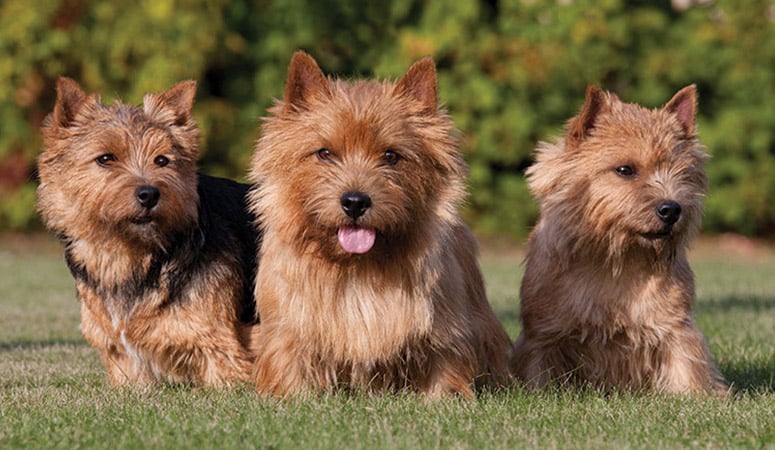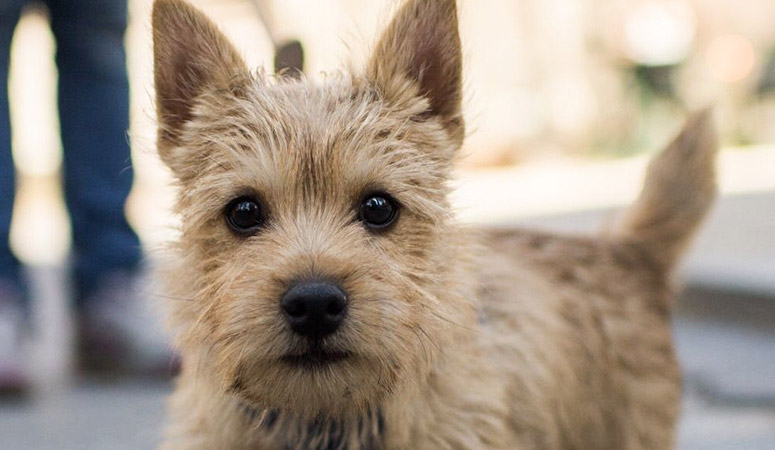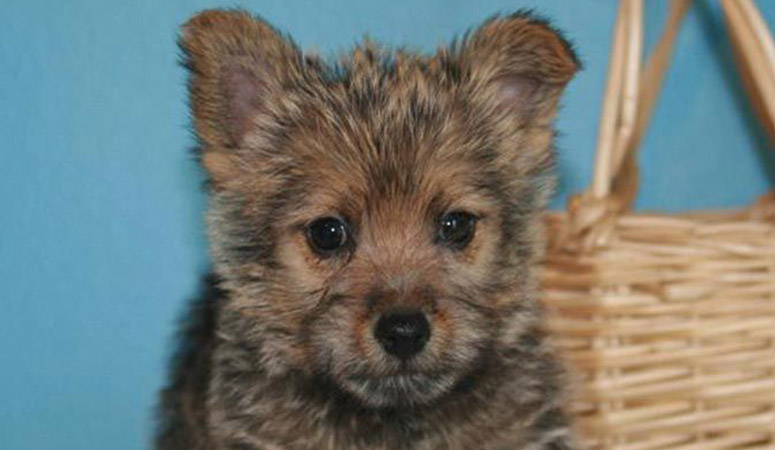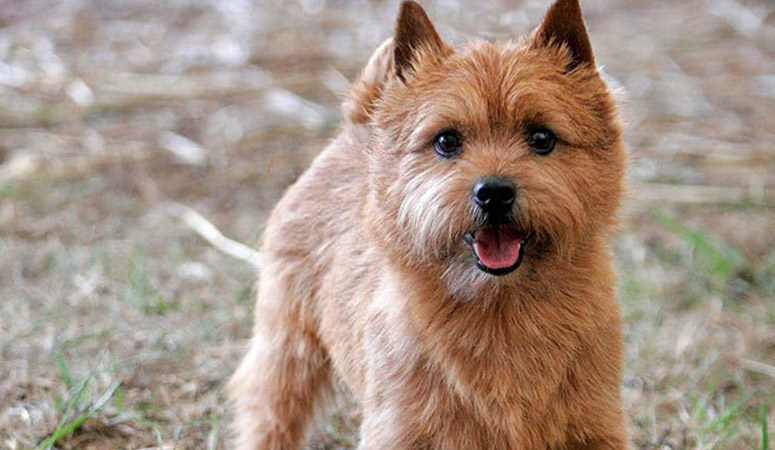Norwich Terrier
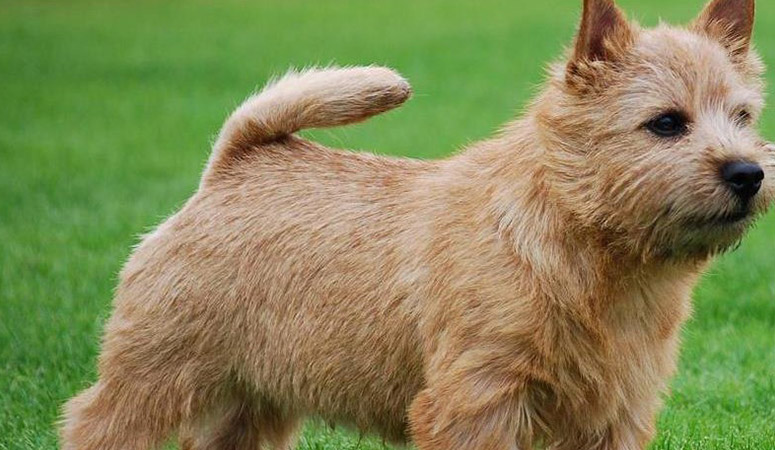
As one of terrier brethrens, Norwich Terrier was once bred to hunt vermin. Nowdays, they are more of a companion than a hound. Tolerant and sociable as Norwich Terriers are, these companions still have hunting instincts. Any protentially unprovoked behaviors should be hold back.
| Other Names | None |
| Color | Red, Black and Tan, Wheaten, Grizzle |
| Height | Males: 9-11 inches. Females: 8-11 inches. |
| Weight | Males: 11-12 pounds. Females: 10-11 pounds. |
| Life Span | 12-15 years |
| Personality | Affectionate, Alert, Curious |
| Exercise | Energetic |
| Origin |
| Popularity | #102 |
| Groom Needs | Weekly Brushing/Seasonal Shedding |
| Kids Friendly | Yes |
| Dog Friendly | Yes with supervision |
| Watch Dog | |
| Family Dog | |
| Litter Size | 1-3 puppies |
Norwich Terrier Pictures
Norwich Terrier Video
Introduction
The Norwich Terrier was bred as a sociable terrier in the United Kingdom, around the 19th century, to assist in extirpating vermin, mostly rats, and in bolting foxes out of their burrows. They are small working terriers not disposed to frequent barking, however, they have a way of announcing the presence of a stranger they aren’t comfortable with. They come in a double coat, which is hard and wiry, with a soft undercoat. The color varieties include red, black and tan, grizzle, and wheaten.
A Norwich Terrier is among the smallest terriers with origin in England. A full-grown dog of this breed stands 9-11 inches, measured from shoulder to paw, and would likely tip the weighing scales at around 11-12 pounds. There’s hardly a size difference between male and female types of this breed due to their toy size. On average, they sire a litter of up to 4 before they die of age at 12-16 years.
Living with Norwich Terrier
Though trimming is of no great importance for dogs with hard and wiry coat, Norwich Terriers need to be hand-stripped twice a year. Owners can brush Norwich Terriers every week to keep them tidy and clean. It especially takes efforts for owners to pull out protective mane which is formed around their neck and shoulders. If owners would like Norwich Terriers to be scruffy, which can be a special style, coat-stripping is unnecessary. Owners should also have Norwich’s ears checked for fear of wax build up, irritations, infections. Apart from coat-grooming and ears-caring, owners should try to keep dogs’ gum in good health. So teeth should be brushed every week. Bad breath bring owners a sense of resistance. Nails should be trimmed every month especially dogs who like to exercise outdoors unless you dress dogs toenails.
Owners of Norwich Terriers should be aware that the Norwich need not only time but space to run off energy. The Norwich are energetic all day long, so owners will find them in an uneasy mood if kept in apartment for too long. As they still have some hunting instincts, an fenced large yard should be available for the Norwich to exercise, a leash is also applicable to the Norch to exercise in an open area. Three times or more everyday outdoor activities can be suitable for the Norwich. mental and physical health. Too much exercise is not appropriate for Norwich Terrier puppies, as their joints and bones are still growing. Any harmful actions should be hold back by owners if their dogs are still at a young age. When puppies jump up or off between sofa, stairs and desk, owners should notice it and give forbiadable directions. they need to be forbidden. Puppies’ joints and limbs are still growing, jumping and running can lead to too much pressure on these body area.
Norwich Terriers are of small size. The amount of food should be suitable for their small size. The frequency of feed is of great importance. Healthier are dogs fed with large amount of food regularly than different amounts of everyday food. Owners can ask for a feeding schedule from breeder. Owners should not panic if dogs have any tummy upsets. You can try to change the diets of them, but it takes some time for them to get recovery. If you still concern about it and don’t know what to do about it, discussion with the vet can be a good choice. Twice-a-day meals is of great health for older dogs. The older Norwich will be less critical about food, but owners should also feed them with high quality material. Fresh and clean water should be a basic recommandation. Try to avoild overweight issues on dogs, as they will be lazy at exercising. Digestive problems can be bad to dogs’ health.
Basically, Norwich Terriers are a in good health. However, health screening is still of great importance. Hip dysplasia, degenerative myelopathy, epilepsy and upper airway syndrome are common among the Norwich. What is less known to people is upper airway syndrome, which affects dogs’ respiration. This respiration disease is variable.It is inheritable in some cases, while some not. So owners should get aware of the possibile chances of the inheritance of disease on next generation. The Norwich are prone to develop plaque and tartar, so a basic teeth-brushing should be necessary. Apart from dental care, ears and eyes should be checked and cleaned regularly. Owners need to use some sterilized items to clean ears of the Norwich in case of irritations, infections and wax build up. The Norwich can stay in good health only if some general clean measures taken.
Total Annual Cost: $2139
Cost is estimated for the first year and may vary depending on many factors, such as dog food, health care, leash, collar, licensing, possible fencing, crates, training and obedience classes, dog-walking, grooming, treats, toys, flea, tick, and heart-worm meds, microchips, etc.
Norwich Terriers are smart and energetic. So training is of no difficult for the Norwich. They would like to obey what directions owners give to please and respond owners. Early socilization can do good to training, dogs will be more attentive and possitive. Puppies should be properly developed to get familiar with outside world. As the Norwich are amiable and outgoing, getting familiar with other environments is easy. Their personalities are suitable for training, so that you will always find the Norwich do well in performance and companion events. The Norwich can be perfect at activities, such as earthdog , barn hunt, obedience, and agility. If owners are not enthusiastic about performing or rewarding things, basic obey trainging can be more applicable to owners.
History
The Norwich Terrier is closely associated with the Norfolk Terrier. For the most part of their history, they were regarded as two varieties of the same breed, under the name Norwich Terrier with distinctions in Studbooks to indicate the drop-eared and prick-eared varieties. However, it wasn’t until around mid-1900s that they were recognized as separate breeds, the drop-eared dogs designated Norfolk Terriers, while the prick-eared ones were the Norwich Terriers. Norwich Terriers are of British descent, believed by many to have originated in Norwich, although there are reports that claim that this breed was developed in Trumpington.
A dog named “Rags” is believed to be the ancestor of modern-day Norwich Terriers. Rags was a Trumpington Terrier, according to several reports. It was owned by a Norwich-based farmer who bred it to produce several litters. And with that began the bloodline of the Norwich Terrier. Later in 1914, some of Rags’ progenies were sold out to Frank Jones who further bred these dogs by, perhaps, crossing with certain Irish terriers and Cairn-type terriers. This formed a foundation for the Norwich Terrier breed, one of these puppies (named Willum) was exported to Philadelphia where it became first of the Norwich Terrier breed in America.
Until 1930, the Norwich Terrier was bred in varieties of dropped ears and pricked ears. The drop ears were cropped by some breeders until it was considered illegal. In the 1930s efforts to distinguish these varieties into different breeds were intensified, although it wasn’t until 1964 that the drop-eared variety was distinctly recognized as the Norfolk Terrier by the Kennel Club of England. Kennel clubs in America and Canada followed suit in 1979.
Helpful Information
Breed Club: NTCA Rescue & Rehoming
Breed Club Link: http://www.norwichterrierclub.org/
Breed Club Rescue: NORWICH TERRIER CLUB OF AMERICA
Breed Club Rescue Link: https://norwichterrierclub.org/

